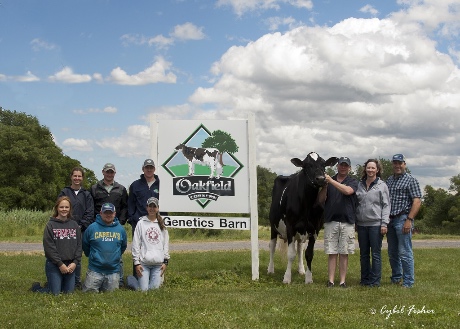With dairy prices at a 30-year low, Genesee County dairy farmers may find some relief in new USDA price supports.
The government is essentially agreeing to pay above-market prices for some dairy products as part of the Dairy Product Price Support Program. In this 60-year-old program, the government buys dry milk, butter, and cheese and stores these products until they can be sold on the open market or donated to domestic or international charitable programs.
From a Rep. Chris Lee press release:
The increase, announced this morning by Agriculture Secretary Tom Vilsack, will raise the price paid for nonfat dry milk from $0.80 per pound to $0.92 per pound, the price paid for cheddar blocks from $1.13 per pound to $1.31 per pound, and the price of cheddar barrels from $1.10 per pound to $1.28 per pound. Temporarily raising the price of these dairy products increases the price that dairy farmers receive for their milk.
The price increase will be in effect for three months. It is expected to boost dairy revenue by $243 million.
In a press release, Sen. Kirsten Gillibrand is taking some credit for the USDA action, and she says:
“While this is great for New York’s dairy farmers, this is only a temporary solution to the fundamental problems with the dairy pricing system,” Senator Gillibrand said. “When I met with Secretary Vilsack on Wednesday, I made it clear that the current system is not working for New York dairy farmers – who have been pushed farther and farther toward bankruptcy. During these tough economic times, this increase will bring some much needed relief for our farmers.”
Here's Lee's statement in support of the increase:
“While this is certainly good news and will provide some relief, Washington still needs to be doing more to support our dairy farmers,” Congressman Lee said. “Dairy is such an important economic driver in Western New York, but when you have milk prices declining rapidly, and the cost of feed and fuel going in the other direction, it makes it impossible for even the most experienced farmers to make ends meet.”
Meanwhile, the Obama administration is apparently critical of the price-support program, saying in a report "the program has not demonstrated results."
Gillibrand says she has a three-point plan to help dairy farmers:
... including legislation to double the amount of money farmers receive from the MILC program, legislation to index the MILC rate to keep up with inflation, as well as plans to hold Senate hearings on dairy pricing both in Washington, D.C. and New York State.
Gillibrand is not alone is seeking changes to the MILC program, according to the New York Times:
Several caucus members called for more federal action in the short term, including higher payment rates in the Milk Income Loss Contract subsidy.
"It still comes down to a supply-demand issue. We have a lot of supply, demand has decreased, exports are down, and we have mild temperatures here so cows are happy, at least in the Midwest, producing a lot of milk," said David Zaslavsky, a Chicago analyst with Downes-O'Neill.
Apparently, there's something to the cheese and milk marketing campaign in California: "California cows are happy cows." Temperate weather makes cows happy. And we always thought it was just a funny line. (Though, PETA never thought so.)
Additional information from Lee's PR:
New York is the nation’s third largest dairy state, generating $2.4 billion annually, more than half of the state’s total agricultural receipts. Wyoming is the state’s leading county for dairy production. Unfortunately, the economic crisis has had a significant impact on the dairy industry. For the first five months of 2009, the benchmark federal order average price was $11.59 per hundredweight, down 25 percent from the average of the previous five years. In June 2008, New York dairy farmers were paid $18.81 per hundredweight. Milk prices for June 2009 were expected to drop to around $11.40, while the latest USDA estimated cost of producing milk in New York is $25.27 per hundredweight. As a result, dairy farmers in Livingston County are projected to lose more than $23 million this year. In Wyoming County, dairy farmers are projected to lose $28 million, and in Genesee County, $60 million.

